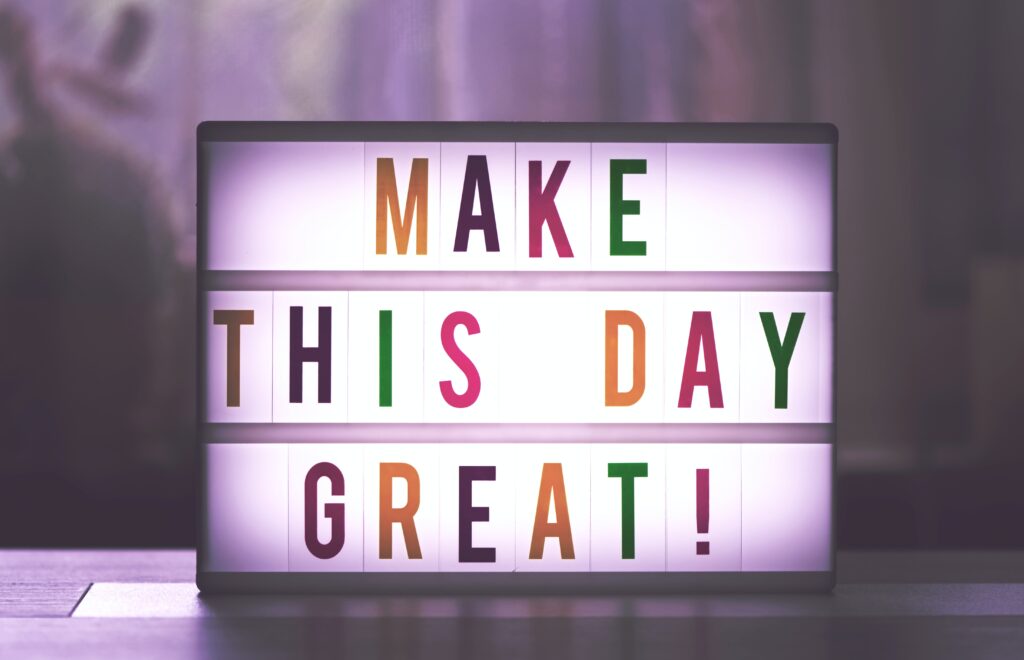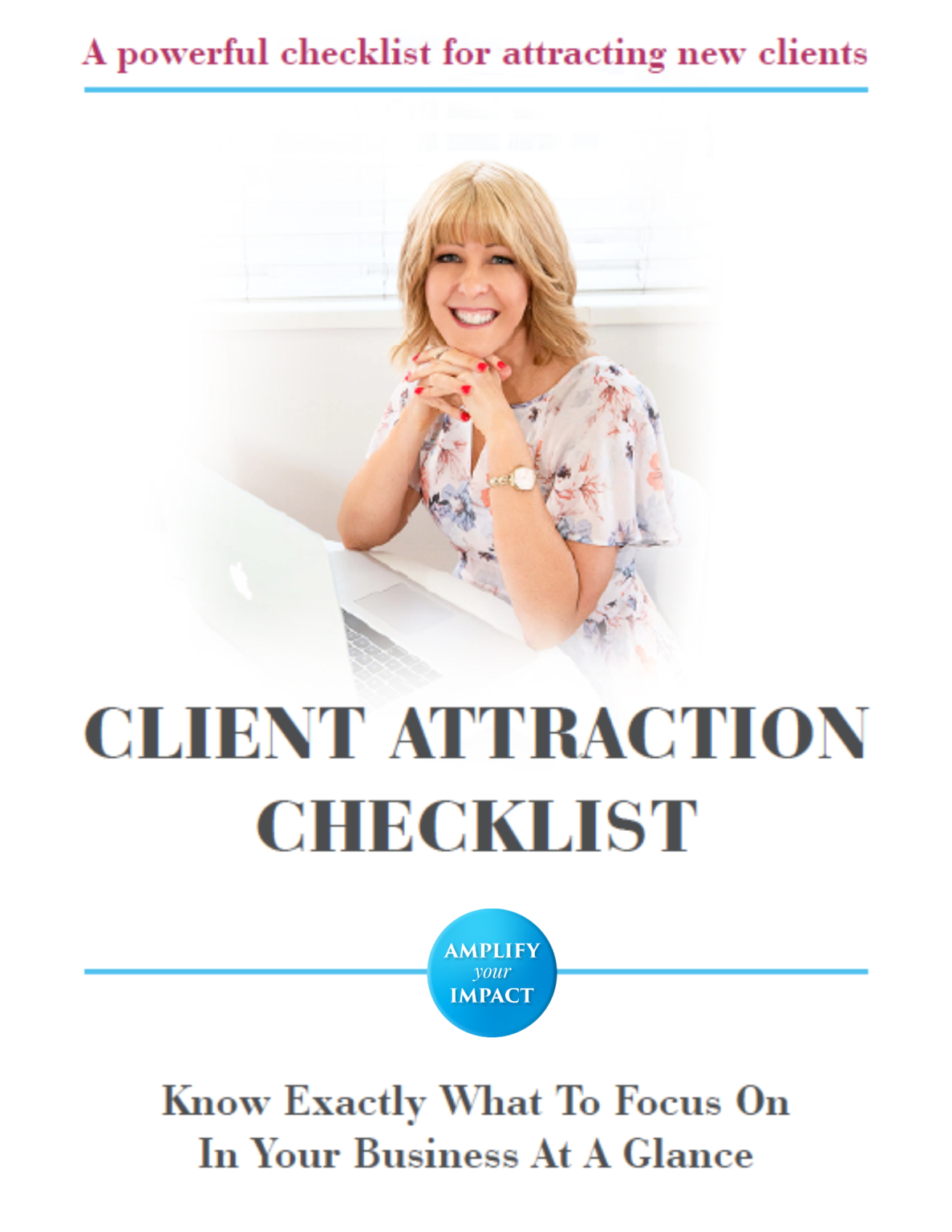Would you like a simple sales process to help you sign up more clients?
In this training, I share how you can turn your discovery calls into paying clients with my zero-pressure 6-step ‘Authentic Selling Formula’.
Selling is an awkward thing for many people. A lot of people tell me they don’t like having sales conversations. I get it. It used to be this way for me also.
No one likes having conversations with people who are trying to push their product or service on us.
But you don’t have to do that to make it in business.
I talk to a lot of people who have this idea that business is cut-throat and they’ve got to be brutal with sales and get the sale closed immediately.
But you don’t have to do it like that. You can have a relaxed sales process, which is a really beautiful conversation between two people who are trying to see if they’re the right match for each other.
A sales conversation can almost be like a coaching conversation where you’re helping someone work through what they want, where they are right now, and what blocks are in their way.
If you’re putting off doing sales calls because you don’t like sales, then what I’m sharing today is for you, because it will help reframe sales into something positive for you.
The reason I’m so passionate about sharing this process is because for years and years I was confused and overwhelmed with so many different sales methods.
Over the years, I’ve done so many sales courses with Les Mills, Matt Catling, Authentic Education, Jeffrey Slayter, Netty’D Lackovic and others, and I’ve read many sales books by people like Zig Ziglar and Brian Tracy.
I’ve spent so much money and time learning various sales methods from the best in the business.
And I’ve also done thousands of discovery calls, and I’ve been able to work out the questions that are the most powerful, potent, and effective.
Sales conversations are about asking the right questions and making sure that you’re super curious about the person you’re speaking with.
I’ve discovered there are 3 essential ways of being when you’re selling:
1 –Be Present
It’s so important to be really present in the call and not be distracted or thinking about the client that you had before you call, or the meeting you’ve got after your call.
You need to be fully present, so you can build rapport with that person and match and mirror what they’re saying. You also need to mirror and match what they are not saying.
Everyone has different personalities, characteristics, habits, learning styles, pain points, desires, and emotional triggers.
2 – Be Prepared
Preparation is so important and the way you get prepared is by having a proven sales process that works. You do not want to get in front of a potential prospect and completely stuff it up. You need a really great sales script and you need to practice.
Because sales conversations are dynamic, you need to be able to deviate from the script, but still keep control and lead the conversation. You don’t want to be so scripted, that you sound like a robot.
Conversations naturally deviate depending on the person’s needs. So you need to be flexible so you can meet the person’s needs, but also be able to bring it back within your sales structure. This is such a fun game to me because it’s like a puzzle that I’ve got to figure out and I find it really enjoyable.
When you understand human behaviours and see what techniques and triggers are happening, and if you’re holding the person so they feel their consequences or feel the pain, you’ve got to know how long to hold them there.
There is a chemistry with sales and a tension sales calls operate within. You need to be fully prepared with really powerful questions to help the person on the call work through the blocks that are in the way of them getting positive results for their lives.
It’s not that they are just saying yes or no to you, they’re saying yes or no to themselves. And that’s a massive reframe for the person who is leading the call. Are you going to be the person that helps them overcome whatever is in their way, so they can invest in themselves?
Money is everywhere but there is only one you. So you need to show people why you’re different, and how you are going to help them make a positive change to their life.
There is an emotional place that people come into when they are ready to buy. You’ve got to be able to pick these psychological cues.
I teach all of these in my program, but in this training, I want to show you more about a really simple process that you can put in place, and this is part of being prepared.
3 – Be Passionate
The other thing that you need to be in a sales conversation is passionate. Not passionate about yourself, or your product or service, but passionate about the person you are serving and passionate about the breakthrough and result you will help them get.
If you’re passionate about the person and their breakthrough, then you will do what it takes to help them overcome their belief systems, so you won’t leave them stuck in their pain. Be enthusiastic and confident.
Imagine getting on a sales conversation with someone who’s not enthusiastic, not confident, not passionate who sounds flat and bored. It would put you off, right?
So be present, be prepared and be passionate.
Now I’m going to take you through my 6-step A to F process that I use in my discovery sales conversations, and the reason I love this process is because it’s so easy to remember. If you know your ABC’s then you can remember this formula.
The best thing is you can use this formula when you are out and about at a networking function when you’re on a phone call or on a Zoom call.
My 6-Step Authentic Selling Formula
To preface this, sales is about influencing people to make positive change to their lives. It’s not about manipulating someone or trying to sell to someone who has no need or desire for your product.
The presumption is that the person you will be talking to has a problem you can solve, they have a need you can help with and they want to be on a sales call with you because they booked into your calendar. So you are getting on the call with integrity to start with.
A – ARE
A is for ‘are’, so where are you at? If I’m having a chat with someone at a networking event, I want to know where they are at. This will help you to know if you both are a potential match. It’s like when you’re dating you want to know the other person’s likes and dislikes, and where they are currently at in their life.
There are a range of questions that you can use in this category. So, when the person gets on the call, I just outline how I would like the conversation to go. I then ask if the person is comfortable and if they have a glass of water.
I then ask, “Out of curiosity, could you tell me a little bit about your current situation? What’s going on for you at the moment?” Or I might ask why they chose to contact me specifically right now. I ask what their circumstances are right now and if they are having problems, then I ask how long a problem has been affecting them.
I have a whole toolkit of questions, and depending on what the person says, I can look at my toolkit of questions if I’m on a Zoom call I have the document open, and I just follow the structure. If I’m out and about and I haven’t got anything in front of me, then because I’ve done so many discovery calls, the questions just start to roll off my tongue.
When the person tells me where they are at, I then ask, “Out of curiosity, why is that important to you?” I then dig deeper and ask how it’s affecting them. I ask how are things affecting them, their family and relationships, and their health.
I ask how long the issue has been a problem for them. When you ask questions this way, you can really get to know their current situation, and it’s not until you really feel like you understand the current situation, that you then move on to the next question.
Before you move to the next question, you need to validate and repeat back to the person what you’ve heard them say. You could use, “I just want to make it clear that I’ve understood this correctly…”. Repeat back to them what they have said.
Once you’ve validated, you want to go into some more digging questions like, “Can you tell me a little bit more specifically about that?.. Could you describe that a little bit more to me?.. I’m curious, can you tell me a bit more about…?”
Keep going until you feel like you’ve got a really good feel of where they currently are at.
B –BE
In the ‘be’ section, you find out where the person is wanting to be in the future.
So I ask questions like, “What’s the specific outcome that you want? How many clients do you want? How much money do you want to make?
If you’re a weight loss coach you would ask, “How much weight do you want to lose? What dress size do you want to be? What’s an outfit that you want to fit in?” You need to be really specific.
Then you start building questions higher and ask, “What would your life be like if you solve this problem? How would it affect your family, your house, your business, your work, your emotions?”
If you think about the whole wheel of life, everything affects everything else. Your business or your work affects your family. Your mental health and emotions affect your business and your family. Your physical health affects your mental and emotional health.
So you want to get them to paint a picture of where they want their life to be.
Ask them about their big vision and their ultimate vision for their life. I get them talking about their vision, feeling it, and seeing it inside of their mind. I help them paint a really clear and vivid description of the future they want for themselves.
I spend quite a lot of time there. And then I go into the benefits. So I ask them what some of the benefits would be if they achieved their vision. And if they don’t move towards their vision, then I ask them how that would impact them.
C – CHALLENGES
There are 3 parts to the ‘C’ part to the process.
The first is challenges. What challenges are in the way and what roadblocks are preventing the person from getting where they want to be? You need to ask, “What’s not working for you and What’s holding you back?” “Where are you most struggling?” And, “Where are you frustrated?”
I have a whole lot of questions that I ask around the challenges someone is facing. One of my favourite questions is, “Where do you need the most help? Is it strategy, execution, skill acquisition?” I ask where the gaps are that they need the most help. I ask, “What have you tried that hasn’t worked for you?”
Once they say their challenges, I then take them into the second part which is the consequences for not changing.
And this is where you don’t just want to rush to the solution. You want to stay in the consequences and to do this there is a tension to navigate.
Tension is the chemistry itself. So with the consequences, you actually want to take them to the pain and I know it sounds horrible, but this is so that they can see a real contrast between the benefits and the consequences of what will happen if they don’t change.
They need to see the contrast of their beautiful vision they’ve just described to you and the consequences of their life if they don’t implement changes. You have to put your own discomfort aside at this point because the person has to feel the pain of the trajectory that they are currently on.
I then ask questions like…
“What’s it costing you to not have this problem solved? How is it an issue? Why is it important for you to solve it? What would it be like if you didn’t solve this problem? What would life be like for you in 12 months’ time if you do decide to deal with these problems?”
This might feel really weird but you just need to practice. You need to hold that space for them to actually explore. They might not sign up with you and that’s totally cool.
But if they have got a conviction that they need to change and they can see if they don’t change that the direction of their life will not be positive, then you’ve actually done your job.
So an example question would be, “If you don’t do this, what would be the consequences, and cost you be to you emotionally, financially, spiritually, physically, if you don’t change?”
And then the third stage is commitment.
“Okay, so you told me this…(do a bit of a recap and validate…) so why are you committed to making it happen right now? What’s your commitment level from 1 to 10?”
And then you might say, “Okay, why did you pick that number?” Or one of my favourite questions is, “Why don’t you put the lower number?” Then, the person will give you all the reasons why it’s important to them to change.
Most people pick Number 8. I’ll then say, “Okay, why didn’t you pick a low number?” Then the person will often say, “Because I really want to change and I want to do ….” They actually are now talking themselves into the change.
D – DIRECT
Now you move from the ‘question’ hat, and you put on the ‘director’ hat because it’s here that you need to be the director.
The ABC part of the process is very much the area for curiosity, where you’re getting the person to tell you all about their situation. D is where you take the lead and tell them how you can help them.
To take the charge here, you say to the person something like
“You’ve told me… so imagine this…”
Then you fill in what they’ve told you about their vision and what it would be like for them when they’ve had their problem solved and they’ve achieved their desired outcome.
Now you’re guiding them to see that instead of struggling in an area, they will have achieved. And then you direct them to see what having that achievement ultimately means for their life (health, business, family etc.)
Then you would say to them something like, “If I was able to show you a way to avoid the problems that you talked about and your challenges (mention here the long-term and short-term consequences) would you like to hear about it?”
When they have agreed, I will then walk them through what it would be like for us to work together to solve the problems they mentioned and get the results they mentioned they want.
I’ll say to them, “So I have an [xyz] program that I think will really help you…” and then I go into sharing about my offer.
Here is where I insert something I call CPR. Credibility. Process, and Results.
For credibility, I’ll say something like, “Well over the last 10 years I’ve been coaching thousands of people and I’ve been so grateful so many people get results. And in that time I’ve discovered that the 3 main problems people face are…
Now I share my processes to help people overcome their problems.
I tell them I’ve created a process called the Client Attraction Accelerator and I walk them through the processes of the signature system that I have created to help them solve their problem. Then I’ll share some typical results that people have.
I will share feedback and testimonies that people have given me that I’ve helped them get fully booked with clients. Or it may be that I’ve helped people to run events or webinars. So I will talk about the credibility of why they should listen to me.
I then explain that I offer one-on-one coaching and group coaching. I tell them about my online program and about the extra support they receive, including access to my workshops.
I give details about the payment options and my payment plans that are available, and I talk about all the benefits they will receive.
Once I’ve shared what I have to offer them, I ask them how it fits with what they have in mind. And then I just wait and see what they say. If they want to proceed, I will then go to the next step in the process, which is to engage the person in the sign-up process.
E – ENGAGE
Here is where I take the person through the enrolment process. I would say, ‘That’s fantastic, I’d like to welcome you officially to the program and the community.”
I would then ask for their details to start the process over the phone. Here is where you want to have a card processing system that you can do it on the phone.
Next, I explain the process that will happen next.
I tell them something like “I’m going to email you a partnership agreement so that you can read and sign it, and email it back to me. When I’ve received this, you can get started straight away. I’ll send you the logins for the online course and you can book in your first one-on-one coaching session.
F – FINALISE
To finalise the process if someone doesn’t sound like they want to sign up right away, I will recap briefly the A, B and C’s of our discussion and I will talk about where they are at, where they want to be and the challenges and consequences if they do not address their issues.
If you don’t think you will be a match and you don’t want to work with them, give them some other help to help them out so they gained legitimate help from the discovery call. You would also share your credibility, your process, and results. Stay positive during this part of the conversation and don’t be in a rush to get someone over the line.
The whole conversation can happen from A to E in 30 to 45 minutes. You really don’t need longer than that. If the person wants to think about it, you can book them in for another 15-minute catch-up.
Anything longer than 30-45 minutes for the discussion and you will probably be getting stuck in sharing too much content or going too much into ‘coach mode’.
If you would like help and support with your sales calls, I’d love to help you go through the sales session and personalise it for you, so that you can feel really confident on your calls.
I offer a free 45-minute clarity session for people who have not had a session with me prior.
Kat
 Your offer needs to be designed very specifically for a clear problem and solution.
Your offer needs to be designed very specifically for a clear problem and solution. Your content has to be compelling, hook people in, engage people, speak to their fears, to their desires and your content needs to connect with them emotionally.
Your content has to be compelling, hook people in, engage people, speak to their fears, to their desires and your content needs to connect with them emotionally. There’s a lag time between putting the seeds in the ground, watering them and making sure they get the sun and looking after them before they start to grow and produce fruit. Most people don’t keep going and quit before the harvest comes.
There’s a lag time between putting the seeds in the ground, watering them and making sure they get the sun and looking after them before they start to grow and produce fruit. Most people don’t keep going and quit before the harvest comes. I ask the person when I get on the call or Zoom if they are comfortable, have a glass of water, and are ready to start with the strategy session. I then have my questions and structure to follow based on the information I’ve received from their questionnaire.
I ask the person when I get on the call or Zoom if they are comfortable, have a glass of water, and are ready to start with the strategy session. I then have my questions and structure to follow based on the information I’ve received from their questionnaire. I wish I knew the power of mentorship and coaching back then.
I wish I knew the power of mentorship and coaching back then. Networking for a lot of you is not easy, and you feel like you’re not good at it. I network a lot and some people are really bad at it! They are not present, not listening, and not hearing what you have to say. They are half distracted.
Networking for a lot of you is not easy, and you feel like you’re not good at it. I network a lot and some people are really bad at it! They are not present, not listening, and not hearing what you have to say. They are half distracted. Copywriting is one of the most undervalued, underrated skills, but being able to write well is one of the most important skills.
Copywriting is one of the most undervalued, underrated skills, but being able to write well is one of the most important skills.


 The path of least resistance and comfort actually becomes really uncomfortable in the end. You don’t drift to success or to your next level. You have to be super intentional and it starts with intentional thinking.
The path of least resistance and comfort actually becomes really uncomfortable in the end. You don’t drift to success or to your next level. You have to be super intentional and it starts with intentional thinking.
 Our results are based on our actions, our actions are based on our feelings and all of it is coming from our thinking and the stories that we tell ourselves. These stories include how we think about ourselves.
Our results are based on our actions, our actions are based on our feelings and all of it is coming from our thinking and the stories that we tell ourselves. These stories include how we think about ourselves. How often are you having these commands that are going to get you that result? “I absolutely can create 10k a month as a business owner, and I will keep going until I find a way.”
How often are you having these commands that are going to get you that result? “I absolutely can create 10k a month as a business owner, and I will keep going until I find a way.” Fast lane activities are: directly contacting people, sales calls, and private messages.
Fast lane activities are: directly contacting people, sales calls, and private messages.